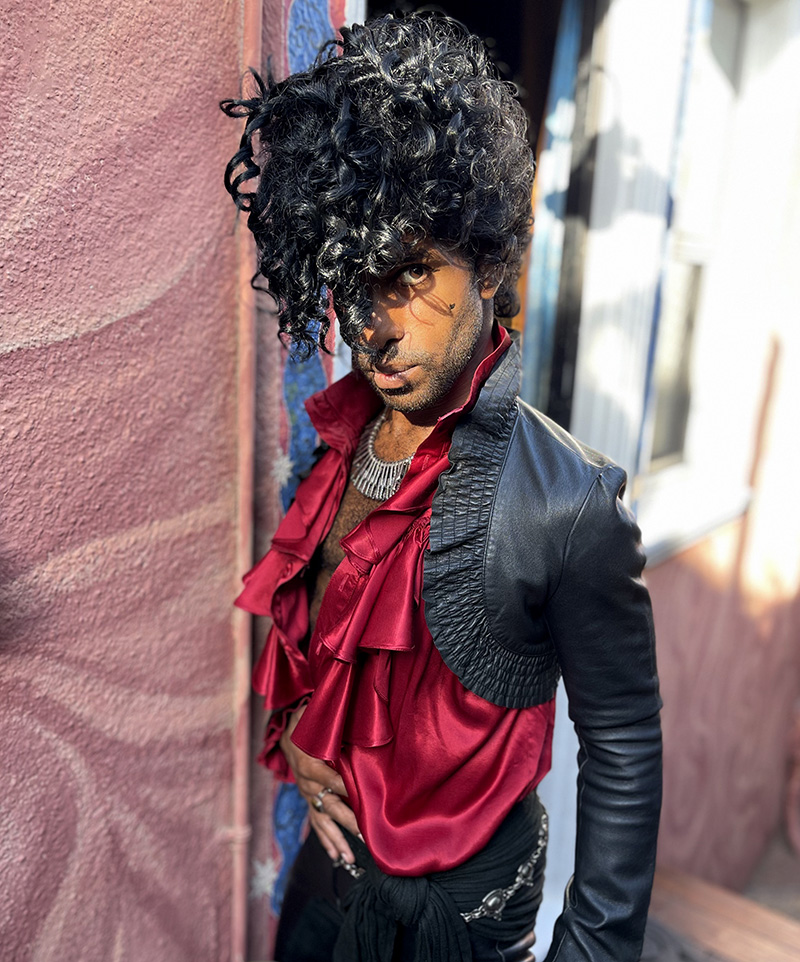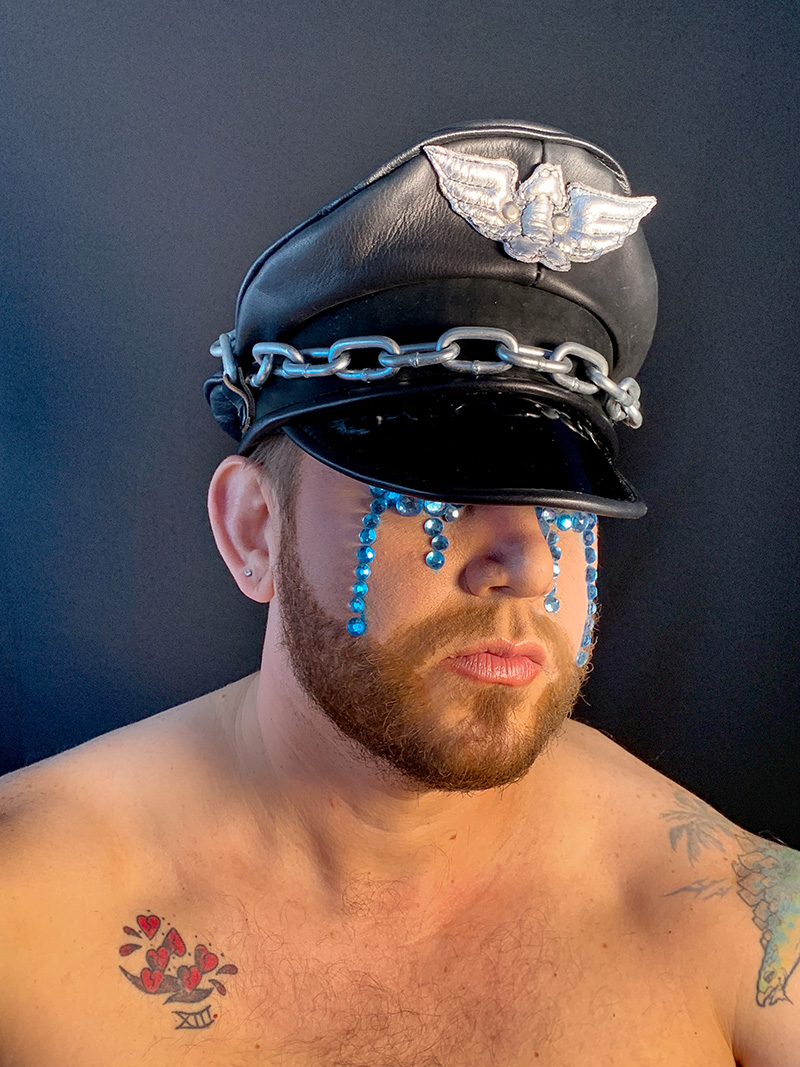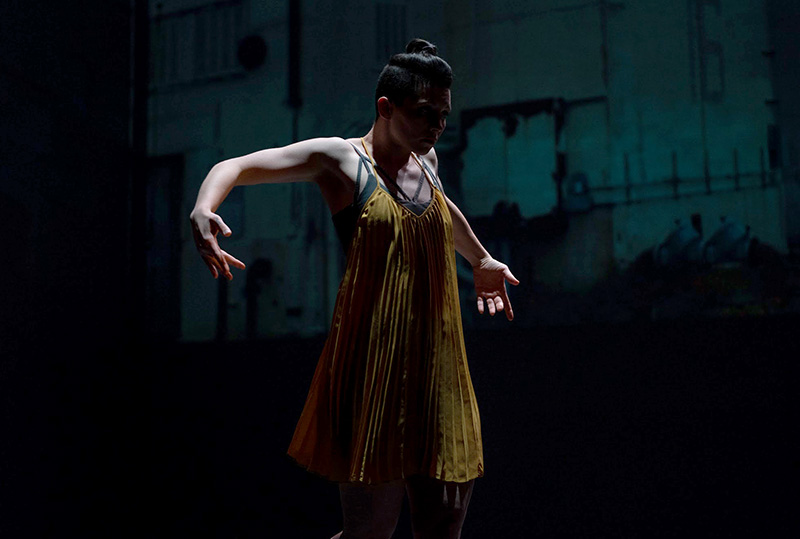Tabled: Gender and Sexuality
TRANSCRIBED BY COURTNEY KING, EDITED BY EMMALY WIEDERHOLT
Tabled, a project by Chlo & Co Dance, takes what has been set aside – “tabled” – and brings it into conversation. The series ran from March through December 2021. The panel “Gender and Sexuality” was held on July 10, 2021 via Zoom and featured Bay Area performance artists Nick Brentley, Jaq Dalziel, and Kevin Seaman. This transcribed and edited version seeks to continue the conversation.
Questions for panelists:
- What do gender and sexuality mean to you in your art form?
2. How are gender and sexuality co-opted?
3. What future do you imagine for gender, sexuality, and the arts?
~~
Nick Brentley: My name is Nick Brentley, he/him pronouns. I identify primarily as a dancer though I’m also a musician. I was an art model in the Bay Area and in New York City. I’m also a wardrobe stylist. Anyone who knows me well knows that clothing’s a very important part of my life.
Jaq Dalziel: My name is Jaq. I use they/them pronouns, though I’m thinking about putting she/her back into the mix just to reclaim it. I identify as an artist and a choreographer. Right now, I work primarily with preschoolers. I teach in Berkeley and Oakland. I’m very passionate about giving gender-inclusive workshops to dance companies. I’ve also done a few for nonprofits in the greater Bay Area. I think it’s really needed, and I’m proud to do it.
Kevin Seaman: My name is Kevin Seaman, they/them pronouns. I am an interdisciplinary artist. I’ve been in San Francisco since 2004. I am also a consultant. I work with a lot of different organizations. I am doing artistic direction for a new organization I founded a few years ago called Diamond Wave. My artistic practice is about exploring identity and drag culture.
Nick: I believe the first question is: How do gender and sexuality show up in your art form? Within the dance world, lots of different ways. You have males doing masculine things like lifting other people, typically women, in the ballet world. They have this term, “the crane,” for a tall man who’s just lifting people throughout the entire performance. I’m 5’7″, 5’8″ on a good hair day. I’m not a crane. I’m more like a Fisher-Price Tonka Truck. I’ve been thrown into scenarios where, because I’m male, there’s an expectation for me to fit into that role of being the strong arm. Or there have been times when I am expected to bring in masculine energy as a male presenting person, whether it be in an audition, class, or a body of work.
I’ve been in the Bay for about ten years now. Prior, I was in New York City, and coming to a place like the Bay Area that is very progressive and where identity is so central, the question is: How do you teach to a variety of genders and identities versus just two? How do we bring ourselves into our work while being inclusive of others who might not be like us?
As it relates to clothing, if you go shopping, you’ll find men, women, children, that’s it. While there is unisex clothing out there, there’s typically not a section for it. People are accustomed to having only those options and being pigeonholed into choosing one. People who know me well have seen me wear things that a lot of other cisgender straight men might not wear. There’s a reason for that. I’m a smaller male, and finding clothing that fits has been challenging. The men’s clothing industry typically doesn’t acknowledge people my size. Either I have to invest a lot of money in alterations to get it to fit, or I’ve discovered I have a lot more success in the women’s section where most garments fit right off the rack. They don’t need any alterations. Shopping in the women’s section has exposed me to more cuts, styles, fabrics, textures, and colors. At this point, 70 to 80 percent of my wardrobe is women’s clothing, and that’s not in an effort to dress like a woman, but more so to cater to my size and dimensions.

Nick Brentley, Photo by Tanika Baptiste
Kevin: I identify so hard with not fitting into men’s clothes. I was a costuming double major in college. It’s such a lack of imagination.
Jaq: My partner Eden-Marcel is also non-binary but masculine center, and that’s something they are confused by; women’s clothes have endless options and endless expression.
Kevin: I’ve also found that most gender-neutral clothing lines are men’s clothes for women’s bodies.
Jaq: I’ve seen this meme floating around that’s like, “Why do I have to choose a square sack if I’m choosing unisex clothing?” It’s all very modular clothing.
Kevin: And earth tones.
Jaq: Exactly. I relate to something you said, Nick. We get so pigeonholed. Part of where gender and sexuality show up in one of my art forms is teaching, seeing all the little kids just wearing whatever they want. We’ll have little boys come in pink leggings, and little girls come in Tonka Truck shirts, liberated from this binary.
We have this book; it’s called Neither [by Airlie Anderson]. It’s about a little bunny bird hybrid born in the Land of This and That, where there are birds and bunnies. Neither gets told they’re neither, and they need to go away because they don’t fit in. So Neither flies away to the Land of All where everybody is everything. Just seeing the kids’ acceptance, “Oh yeah, I see that Neither is neither, but Neither should fit in with all, all are welcome” is so cool. They’re three to five years old.
Kevin: I want to talk about one of the first projects I conceived of and made. This was back in 2011; it was this short comedic sketch video. For about four months, I acted out a bunch of sexual positions. A lot of it was just being able to talk about sex. I grew up with Catholics. We did not talk about sex ever. Being in that environment, I was hungry to have conversations about sex.
I also want to talk about the drag I do. I’ve pulled back from drag recently; as I’ve shifted into a nonbinary identity, LOL McFiercen (my drag persona) hasn’t felt as great on me. But LOL was a way to start playing with my femininity in a way that I was denied. I debuted a show in 2019 called #femMASCULINE about my journey through gender and sexuality. It starts with being a child and starting to talk to people in chat rooms, developing a sexuality through apps and online platforms, because that was what was available to me as a closeted child in suburban Colorado. This show was about understanding that a lot of that behavior is the basics of toxic masculinity. As I grew older, I began to fetishize that as a gay man, and then reject that, and finally queer it as a drag queen. Ultimately it left me with a lot of question marks. Right after this show, I realized I’m nonbinary. I did the whole show to figure that out.

Kevin Seaman, photo by Kevin Seaman
Nick: That’s fascinating to hear about your journey, Kevin, particularly from your youth. I also came from a Christian household. I went to an Episcopalian all-boys prep school from grade four through 12. All boys, coat and tie, every day. In college, I was able to start playing with clothes. At the end of freshman year when classes were over, people were moving out so quickly they just started throwing away things. It was a lot of electronics, clothing, and furniture, and amidst that, I found a pair of flare pants. I love the seventies. I remember looking at them like, “Oh, those look like fun.” I put them on, and they fit. But I knew they were women’s pants; you could see it on the brand. I felt self-conscious initially when I wore them. It took years to be comfortable and to accept that, yes, these are from the women’s section, but I would much rather wear something that fits well and makes me feel good regardless of where it comes from. At the end of the day, it’s all fabric, just sewn together in different ways.
Kevin: Clothes don’t have gender; people do.
Nick: Women are expected to turn over their wardrobes a lot more quickly. As a result, a lot of clothing is made very poorly and flimsy, with thin materials and poor construction. It has a very short life versus men’s wear, which is typically made with higher quality materials and better construction. Something I’ve discovered from wearing women’s clothes is the small one-inch shallow pockets or the pseudo fake pockets. I love to be hands-free when I am in the world and only carry a bag when I need it. If I can’t carry my phone, keys, chapstick, and money clip on my person because the pockets are not functional, then it necessitates either having a bag or adding unnecessary layers that do have pockets. Why is the clothing industry so deceptive in this way?
Jaq: I don’t want to wear a purse because even cross-body ones highlight my chest, which, even though I am very feminine center, I don’t love. I have this denim jacket that I wear all the time because it has seven different options with deep pockets. In the Bay it works because of needing layers.
In 2015, when I first started living my identity as nonbinary, there was this “death to gender” conversation. I always felt this sadness; gender really works for some people. Sometimes people feel proud and at home in their gender. How can I honor that in dance when I’m trying to get rid of any drop of gender presentation? That’s something I’m grappling with. I’m nonbinary, and my gender expression or my gender identity is none. I don’t have a gender. I feel at home in that. And yet I get read as a woman. I wish for the deconstruction of the binary but also honor that it is important to a lot of people. It’s so hard for me to find what feels good while honoring both. This topic of clothing and costuming is a big part of that for me.
Kevin: For me, also as a nonbinary person, I feel fluid. Sometimes it’ll be extremely masculine. Sometimes it’ll be extremely feminine. Sometimes it’ll be extremely everything. Sometimes it’ll be extremely nothing. Sometimes people will not recognize me.
Jaq: My hair is a huge part of my gender, and my hair uses she/her pronouns. Sometimes I’ll just shave it all off. And then, in the grow-out phase, I’ll go for a bowl cut. I had the quarantine cut. When I started doing Zoom with my preschoolers, the parents would be like, “That’s Jaq.” And they’d say, “No, there’s no bun.” It is refreshing to step out and have this aesthetic that is so different than the usual high femme type. It’s refreshing sometimes to have a blank canvas.
Nick: I’m consistently read and acknowledged as a dude. Kevin, I love that you mentioned the fluidity of one day being super masculine, another day a little feminine, and sometimes there are elements of both. As a cisgender straight male, to go out on the town wearing makeup, heels, and form-fitting wear, there’s an assumption that’s not something a straight male would do.
Regardless of what I wear on my body, on my face, what I do for a living, the way I move, the way I speak, all the things that might clue people into categorizing me have no bearing on who I’m attracted to or who I choose to sleep with. Those are completely independent. That’s hard for people to accept or grasp. I watch people try and categorize or label me based on the information they’re receiving. But when the reference is changing daily, it can be confusing for people.
Jaq: Watching kids, one of the earliest developmental phases is to categorize and figure out what’s what. At the beginning of the year, the kids use any pronoun for anybody because they can’t figure out why we say “he” for some people, “she” for some people, and “they” for Jaq. Throughout the year, it changes to, “Well I don’t know if you’ve heard, but boys have penises and girls have vulvas.” But it doesn’t matter. We could say that for any body part. Girls have elbows, boys do too, and so do nonbinary people.
Kevin: As we’re talking about those norms, it’s important to articulate where those norms come from. There’s a great book by Alok Vaid-Menon called Beyond the Gender Binary, where they talk about their nonbinary identity and then go into how eugenics influenced the binary model. It’s a structure that is embedded within our society and norms that is racist, misogynist, homophobic, and transphobic.
Jaq: I’m interested to hear from both of you about how gender and sexuality are co-opted. I really grappled with this question.
Nick: It was hard for me to ponder that question without including race. As I look at specific dance forms, particularly street dance forms, which is a huge umbrella, some emerged from gay culture and specifically gay culture of people of color. This community of people of color who created these art forms in very secretive or underground places have since emerged and been regarded as cool. And now they’re being incorporated into a Miley Cyrus’ VMA performance. Those people who deserve credit get erased.
In 2007, I was working at a dance studio checking people in at the front desk. It was the same year Dancing with the Stars had Emmitt Smith on the show, who is this large Black male football player, this icon of masculinity, dancing on a public stage. He qualified dance as being something that was cool for men to do. I watched the enrollment for men in partner dance classes explode. At one class, there were 17 people and five of them were women.
Kevin: I’ve done a lot of research about people who did the work in the 1960s for us. I think a lot about José Sarria, who, if you’re not familiar, was the founder of the Imperial Court System. They’re known as the Widow Norton, just an amazing person. They helped found the Society for Individual Rights, which was a gay men’s organization. They created the pocket lawyer for when people got arrested in raids.
LGBTQ people finally get advertised to from corporations. It’s a major step up, but it’s also largely performative allyship. That’s one way I feel gender and sexuality get co-opted. I think about corporations co-opting and just wanting our money without actually caring about our lives.
Jaq: The audacity of corporations to put a rainbow on their logo when they’re donating millions to anti-trans, anti-gay, anti-everything that the rainbow represents is mind-blowing. Seeing how much money can be made points to this ultimate co-opting of what we hold dear and sacred.

Jaq Dalziel, photo by Robbie Sweeny
Kevin: I’m going to lead us to our last question: What future do you imagine for gender and sexuality in the arts?
Jaq: I would love to see more support, respect, and advocacy for everybody in our communities. I want the future to be full of sharing knowledge, working as a team in a community, and getting back to that sacred place of love.
Kevin: There’s not a path forward for gender and sexuality in the arts that does not center racial equity. Gender and sexuality are critical components of liberation, but in this struggle, if we’re not centering our trans artists of color, then we’re going to have to do the work again.
I want to share a fantastic book for anyone who identifies as male that was written by Rocco Kayiatos and a lot of other contributors called Mindful Masculinity Workbook. I also want to share bell hooks’ book The Will to Change.
I will say the one thing that needs to happen for gender and sexuality in the arts is that all venues need to have all-gender bathrooms. There’s no reason why we can’t do it. If anyone has a venue and you do not have an all-gender bathroom, go online right now, look up a sign that matches whatever plumbing you have in there, and put that sign up.
Audience question: Can you talk more about gender expression, sexuality, and perception?
Nick: Clothing is powerful because it affects the way you look, how people see you, and all your interactions with people. It also affects how you feel, how you can move, how you sometimes behave, how you think.
Kevin: As someone who is very gender fluid and has a lot of different expressions, I have often conformed to how I expect people to see me in a certain environment or what’s expected of me in a certain place. Over quarantine, I just started dressing for myself, not for other people. I was expressing my gender externally for what I know is true on the inside. But for people to do that, you have to get through the mental space so that you can take those chances and make yourself uncomfortable. That discomfort is ultimately going to lead to growth.
~~
To learn more, visit www.chlocodance.com/tabled
